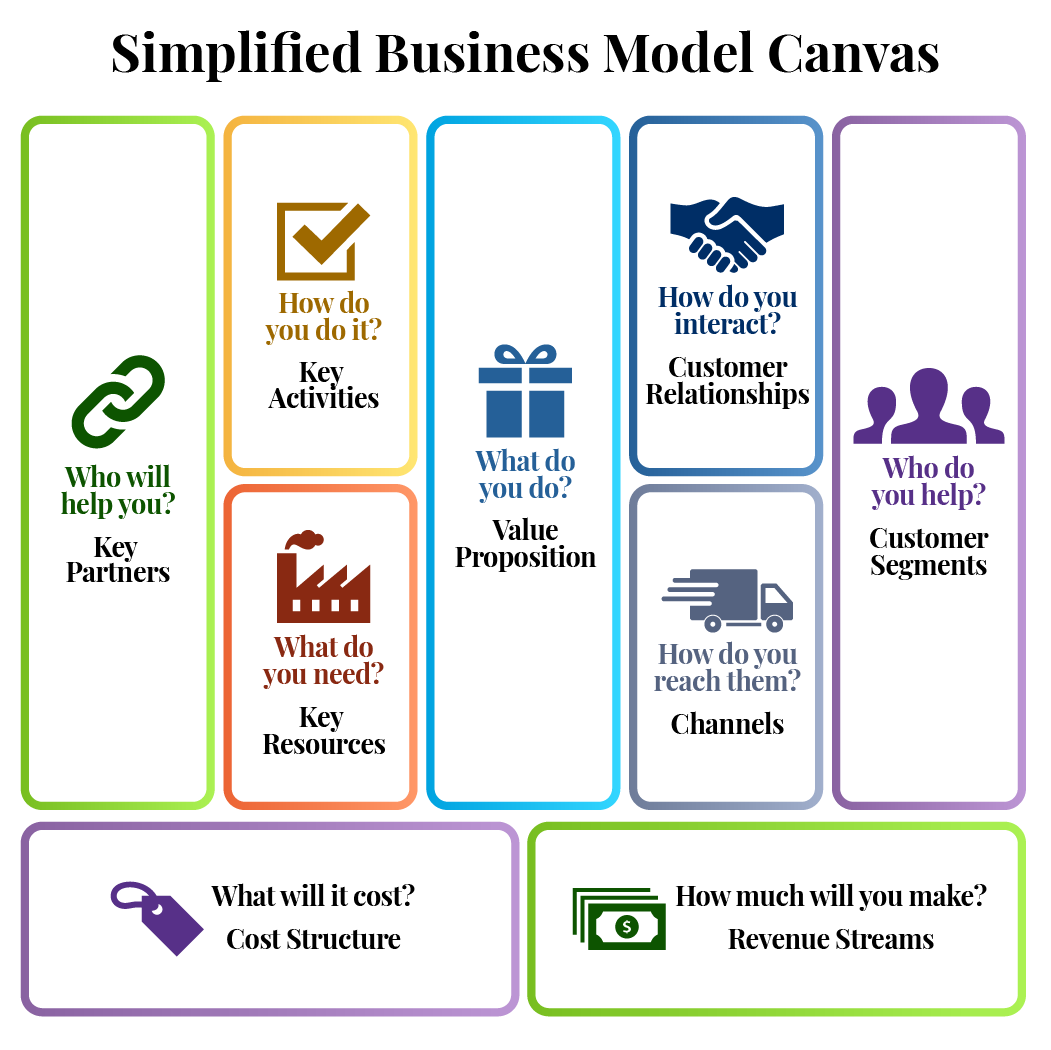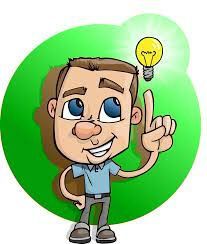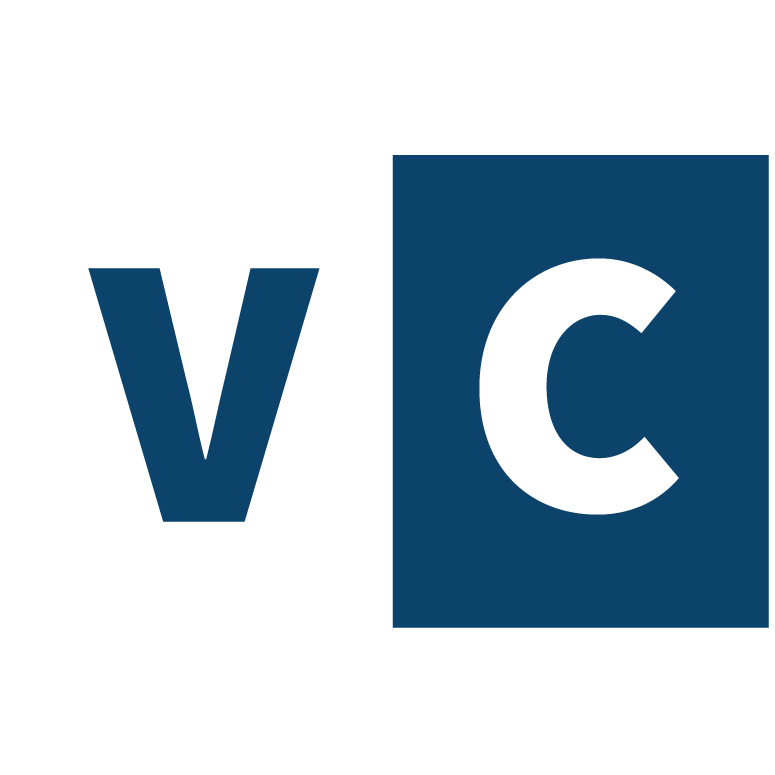Topic 4: Business Model Canvas
The Business Model Canvas (BMC) is a relatively recent addition to the entrepreneurial planning process and available tools to help entrepreneurs. It acts as a template to help entrepreneurs visualize their idea and to streamline the business planning process to help develop and document new or existing business models. Although it is called a “Business” Model Canvas, this roadmap can be used for most any project or idea: a family-owned business, a technology business, a nonprofit organization, a social venture, existing businesses, new businesses, etc. The Business Model Canvas is a central planning tool that helps provide the framework for many of the things entrepreneurs will need to know before and as the business or organization is built. This visual chart includes elements to help the entrepreneur explore the firm’s value proposition, infrastructure, customers, partners, and finances. See a simplified Canvas below:


Reflection Question: Where do you think the best place to start planning your entrepreneurial idea might be – with which box do you think you should start? Write your answer in your Learning Journal.
To create a Business Model Canvas for their idea, entrepreneurs make best guesses (hypotheses) as to how the business or organization will work. The entrepreneur then becomes a scientist and tests those guesses by interacting with potential customers and other key stakeholders who will help refine the idea. Using the information gained during these interactions, the Business Model Canvas is then updated, often many times, to reflect increasingly better understanding of the business’ or organization’s role. Because a market is dynamic, the BMC should be updated based on changes in customer preferences, trends, competitor responses, partnership arrangements, and so forth. The BMC could also be updated based on changes in goals or expectations from the entrepreneurs, or to reflect changes in understanding or experience as the entrepreneurs learn more about their market and idea.
Some more specific information and questions for each section are as follows:
Customer Segments: the groups of people for whom you are creating value. This section answers questions like: For whom are we creating value? Who are our most important customers? What are the customer archetypes/personas? What are the demographic, psychographic, and behavioral characteristics of our primary target audience?
Customer Relationships: the kinds of relationships you have with each of your customer segments and how you will interact with them. This section answers questions like: How do we get, keep, and grow customers? Which customer relationships have we established? How are they integrated with the rest of our business model? How costly are they?
Customer Channels (sometimes referred to as Distribution Channels): the ways your product/service will reach your customer segments. This section addresses questions such as: Through which channels do our customer segments want to be reached? How do other companies reach them now? Which ones work best? Which ones are most cost-efficient? How are we integrating them with customer routines?
Value Proposition: the value added for the customer. This section addresses questions such as: What value do we deliver to the customer? Which one of our customers’ problems are we helping to solve? What bundles of products and services are we offering to each segment? Which customer needs are we satisfying? What is the minimum viable product?
Key Activities: what you’ll need to do to make your value proposition, channels, relationships, and revenue streams happen. This section answers questions like: What key activities do our value propositions require? Our distribution channels? Customer relationships? Revenue streams?
Key Resources: all the important elements you will need to fulfill your value proposition, channels, relationships, and revenue streams. The following questions are addressed in this section: What key resources do our value propositions require? Our distribution channels? Customer relationships? Revenue streams?
Key Partners: the people or organizations you will need to work with to complete the key activities and to access the key resources. This section considers the following questions: Who are our key partners? Who are our key suppliers? Which key resources are we acquiring from our partners? Which key activities do partners perform?
Cost Structure: the costs associated with your key resources and activities. This section explores questions such as: What are the most important costs inherent to our business model? Which key resources are most expensive? Which key activities are most expensive?
Revenue Streams: how and how much your customers will pay for the value you provide. This section will answer the following questions: For what value are our customers really willing to pay? For what do they currently pay? What is the revenue model? What are the pricing tactics?
The Business Model Canvas will be the foundation upon which you will document your exploration into problems to solve, generation of your creative solutions, and building of your successful entrepreneurial endeavor.
Watch the video:
Application Activity: Business Model Canvas Template
Conduct an internet search for a fillable template of a Business Model Canvas. This will be used as a working document to help identify areas of interest and to capture the development of your entrepreneurial process. You’ll be using this to build out your entrepreneurial idea for both Courses 1 and 2. Write your answer in your Learning Journal.
Download this and then submit it as an assignment.

